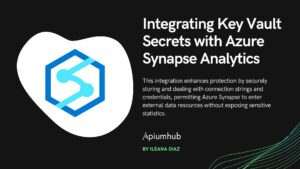Table of Contents
In present-day world, Agile projects require lots of planning and collaborative effort among the team members, in order to deliver high quality product & high customer satisfaction among other benefits of Agile project management. A well-designed kickoff meeting is a key part of this planning. This is a complete step-by-step walkthrough guide.
The Kickoff Meeting
A kickoff meeting is where a product manager and relevant stakeholders set plans, goals, and responsibilities for the team’s work on a new product or set of features. For most organizations, this is also called a product feature kickoff, in which the team will leave with both a shared vision for what the feature should accomplish and an agreed-up set of tactical next steps to begin development.
If the product owner runs it correctly, a kickoff meeting should bring:
- Product Vision
A well-run kickoff meeting gives stakeholders across the company an opportunity to see how building the features will add value for both the user and the company itself. The purpose of this meeting should end with everyone understanding the team’s intent in building the feature; and also it should communicate what customer problem it will solve, and how doing so will improve the product. To achieve a common product vision, it is very important that the objective is the same for everyone and is seen in the same way by the whole team. But this does not mean that we all share the same vision. It’s about alignment. A great way to create a shared vision is through product vision workshops. A vision workshop is called for the whole team, and if possible a user focus group that is reliable and small. Its aim is to define a product vision and align it with the whole team.
- Stakeholder Insights
A kickoff meeting can benefit from various points of view and insights from all stakeholders. This is an opportunity to uncover potential issues, so your developers can foresee some aspects of the feature’s development. If run successfully, a feature kickoff will end with all stakeholders knowing exactly what they need to do next to support the feature’s development.
- Product Strategy
A kickoff meeting allows the team to collaborate and establish a strategic plan for how to move forward. When we have a defined vision and an aligned team that shares it, it is when defining a product strategy. This plan covers many factors, from the market segment to the features that our product will have and how we will make them available to our users. It’s a value proposal that holds a business model, describing channels, resources, income, cost & partners.
But what makes a good project kickoff, or a bad one?
A great kickoff is the result of proper preparation. In this guide we’ll cover the main steps for doing a project kickoff meeting well.
How to prepare a Kickoff Meeting?
- Set a proper time, with full attendance, you can thoroughly review all of the project details. The duration of a kickoff meeting depends on the project complexity. Be sure to have enough time to discuss everything on the agenda.
- Target your audience. Meeting participants should be led by the product owner; especially if the technical team is not present. Also is important to all stakeholders who have insights into customers’ requirements; some end customers, if possible; and the team that is going to work on the project. Prepare your team properly and provide them with the right tools for success in a project kickoff meeting.
- Set a proper agenda. This is a good start to begin your client relationship well. A good approach to the client needs to ensure you give the project the best chance of success. The project kickoff happens once and is the dawn of the project.
What are the stages a kickoff meeting should cover?
Kickoff meetings are required for every project so having a proper agenda for every single one is very important.
1. Introductions
Kickoff meetings are designed to give the project some alignment and a proper direction, the time you spend on building a lasting relationship with all of the team members and stakeholders will prove to be very beneficial in the long run.
2. Project Background
The project background is a high priority overview executed at the very start of the meeting. For a proper project background explanation, you should focus on the project insights, what are the current pain points, what is the historical context and how the project should change for the better. That will help to understand old and new project components from the intern to the high-level management.
3. Project Mission
The mission statement’s purpose is the company’s vision about the project and how it will shape up to be beneficial in the long run. It would be a long game scenario, but project mission should be short, inspiring and articulate.
4. Scope
Scope should basically have a short description with key features outlined, assumptions and restraints connected to the project described, budget and timeline. It’s very important to rally for scope consensus, that will help the team members to be on the same page about the project key factors and restrictions.
There are some recommended approaches to remember regarding the scope:
- Bring strategic Vision: the meeting should build a shared understanding of the project’s vision by defining what business problem or opportunity will be addressed, who the target customers are, what project outcome meets the needs of both your organization and the customers, and how success will be measured and against what acceptance criteria.
- Set realistic Expectations: sharing common goals and defining roles, responsibilities, and respective accountabilities will strengthen the team. Both the team and the stakeholders should agree on the project viability..
- Discuss Risk: making everyone aware of the issues and challenges, sets the tone for honest team conversations that will help everyone prioritize key project requirements, overcome challenges, and deliver better outcomes throughout the project.
5. Planning
Planning is a major part of the whole process. Decide what your deliverables are and what the expected milestones can be so that your team can be prepared when there are any problems in the development phase.
6. Roles
Before the project is developing, you should choose the team roles that will be a part of the project. This will help you to maintain a proper connection with your team from the start and will help you establish clarity. A clear communication is key, so all the external parties involved have a clear understanding about what their involvement will entail.
7. Collaboration
Let everyone in the meeting know you appreciate their presence and you are grateful to have them on board and look forward to working together on the project. This can help in building long-term relationships and creating a considerate team atmosphere. A project kickoff meeting gets the customers and the team together to collaborate in building a successful relationship.
8. Q&A Session
It may seem pretty obvious but you should really leave time for questions at the end of the meeting. This helps everyone, who is present in the room, to leave with a clear idea of how you are going forward with the project and what the milestones are. You should encourage this Q&A time and ask repeatedly if your team members have any questions or not.
Use Agile Methodology
There are certain items that the team should agree on during an agile kickoff meeting as duration of sprints, feedback sessions on the development of user stories, test environment, releases,etc. By the end of the kickoff meeting, each person should have a very clear understanding of the current situation as well as their respective roles and responsibilities. Share this information with each team member to ensure they have access to all things that were discussed in the meeting. For this purpose, remember to use agile methodology.
Author
-
Senior Marketing Consultant & Marketing Manager at Apiumhub. He brings over 10 years of industry experience. He specializes in digital marketing, SEO & business intelligence, delivering results through data-driven strategies.
View all posts









